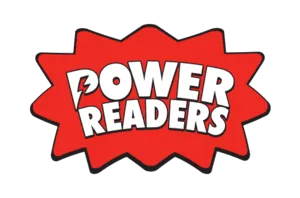The Debate of Literacy Approaches: Science of Reading vs. Balanced Literacy
A look into the ongoing debate between two literacy instruction methods, the Science of Reading (SOR) and Balanced Literacy. This article highlights the limitations of Balanced Literacy, a one-size-fits-all approach, and advocates for the superiority of the Science of Reading. The Science of Reading is described as a research-based method grounded in the science of how our brains learn to read, emphasizing systematic phonics instruction, phonemic awareness, and decoding skills. The article breaks down key components of SOR, contrasts both methods and underscores the Science of Reading's benefits for struggling readers and dyslexic students plus its flexibility in implementation. It also provides practical teaching strategies, urging educators to tailor their methods for an equitable and targeted learning experience.
An ongoing debate within education revolves around two prominent literacy instruction methods: The Science of Reading (SOR) and Balanced Literacy. This debate isn't just theoretical; it's a practical concern for teachers and schools.
Despite its historical use, the Balanced Literacy approach has shown limitations in fostering robust reading skills. It's a one-size-fits-all method, so it doesn't cater to the needs of all readers. Therefore, educators are turning to the Science of Reading as it’s an approach that is rooted in the latest research. It’s a literacy instruction method that significantly impacts students' reading abilities and, consequently, their academic success.
In this discussion, we'll define and explore why the Science of Reading proves to be a superior choice over Balanced Literacy, dissect its key components, and provide practical teaching strategies.
The Science of Reading
The Science of Reading approach is a research-based method firmly grounded in the science of how our brains learn to read. This method places a significant emphasis on systematic phonics instruction, phonemic awareness, and decoding skills. At its core is a profound understanding of the English language, specifically focusing on the relationships between letters and sounds. Utilizing clear and straightforward language without unnecessary jargon, this approach ensures accessibility for educators and learners alike.
Key beneficiaries of the Science of Reading approach include students with diverse learning needs, such as those with dyslexia, as it provides a structured and universally applicable framework for developing essential reading skills. Ultimately, though, all readers can reap benefits from its core elements:
Phonics Instruction: Phonics instruction in the Science of Reading approach may look different from how you’ve taught it before. Teaching phonics with this research in mind involves the correspondence between letters and sounds. Phonics-based instruction breaks down what sounds and letters the word is made of and how to put them together to form words. The focus here is letter-sound relationships, explicitly teaching students how to decode words and sequence sounds. This systematic phonics instruction helps students develop strong decoding skills, which are essential for fluent reading.
Phonemic Awareness: Phonemic awareness is the ability of readers to identify sounds in spoken language. It involves recognizing and manipulating individual sounds (phonemes) in words. This helps the reader understand how words are composed in the verbal form, allowing them to apply these sounds to their written form. The Science of Reading views this as an essential component in decoding skills and building vocabulary.
Decoding Skills: Decoding is the ability to sound out words, and it's a fundamental skill for reading fluently. Decoding skills help readers understand the relationships between letters and the sounds they make, which in turn helps them with new word recognition.
Balanced Literacy
Balanced Literacy is an instructional approach that combines various elements to promote comprehensive literacy development. These elements include reading aloud, shared reading, guided reading, and independent reading to create a holistic learning experience.
Balanced Literacy also contains a component known as whole language. Whole language emphasizes contextual reading, meaning-making, and connecting language to real-life situations. The goal of whole language is to get readers to think about their reading and writing skills instead of depending on memorization and regurgitation. The idea is that students learn to read through the contextual meaning of words rather than decoding them. This approach, while valuing meaningful reading experiences, lacks the explicit focus on foundational skills and decoding abilities. The problem is that words often appear in different contexts, and early readers may not be able to recognize new words in context. Without decoding skills, readers miss opportunities for new word recognition, and eventually fluency and comprehension. Alternatively, the Science of Reading's emphasis is on explicit phonics instruction, prioritizing foundational skills, decoding abilities, and a systematic approach to language acquisition, setting a firm foundation for readers of all levels.
Which Method is Best?
The Science of Reading provides a comprehensive understanding of how students learn to read, touchpoints on the major elements of reading skills, and how they work together to produce more fluent readers than Balanced Literacy. This approach sets a strong foundation that is gradually built upon as a reader becomes more fluent. Let’s break it down:
The Role of Phonics: The Science of Reading relies heavily on phonics instruction to build foundational reading skills. It focuses on more of a hands-on way to apply reading skills and demonstrate knowledge of letter-sound relationships. This promotes cognitive automaticity when determining the letter-sound relationship while decoding words, which ultimately impacts reading comprehension. The whole language approach found in Balanced Literacy does not promote this automaticity because it focuses on contextual meaning.
Whole Language vs. Systematic Phonics: The Science of Reading prioritizes systematic phonics instruction, focusing on the science of how students learn to read. Systematic phonics provides an understanding of the most basic components of language, making letters and new words more recognizable and readable. Readers have a better chance of decoding a new word and determining its meaning compared to the whole language Balanced Literacy approach, which heavily depends on context to determine meaning.
Struggling Readers and Dyslexia: The Science of Reading approach sets a more basic foundation for struggling readers and students with dyslexia. It offers more effective ways to monitor student progress, making it easier for public schools to identify struggling readers. This is crucial because early intervention is especially important in elementary school, the most common time for students to be identified with Dyslexia or other learning disabilities or difficulties.
Flexibility in Implementation: Educators can adapt the Science of Reading method to meet the diverse needs of their students, whether in small groups or one-on-one settings. It offers school districts a more structured way to implement reading instruction across grade levels. Teachers can use this research to guide the design or selection, implementation, and monitoring of what reading instruction looks like for their readers, with opportunities to provide support or intervention. Supports and interventions can focus on the five critical reading skills as identified by the cumulative research.
Teaching Strategies
Tailoring your teaching approach to the specific needs of your students can make an impact on an entire generation of students who go on to become contributing members of society. The Science of Reading method can make your instruction more equitable and targeted to individual needs. It’s encouraged to assess students and adjust methods accordingly. Many different teaching strategies can be implemented with the Science of Reading including:
Differentiated Instruction: Differentiated instruction is a dynamic and effective strategy that tailors reading instruction to the unique needs of individual students. For example, suppose a student struggles with phonemic awareness while excelling in vocabulary. In that case, this approach recognizes that conventional reading scores might not precisely pinpoint these specific challenges. By employing targeted instruction and ongoing progress monitoring, educators can address the distinct needs of each child. This could involve focusing on phonemic awareness exercises to enhance the student's foundational skills while simultaneously providing enriching vocabulary activities to capitalize on their existing strengths. Through the customization of teaching methods, educators create a personalized learning experience that not only tackles challenges but also cultivates further development, fostering a well-rounded set of reading skills.
Small Group Instruction: Educators can target specific skills and provide more personalized support in small groups. Teachers can form small groups with students who are on similar reading levels or need more guidance with certain skills, like reading comprehension or fluency. This is also a time to practice specific skills and invite discussion around reading skills. Students can get social interaction with their peers and may be more comfortable sharing thoughts or ideas in a small group versus whole-class instruction.
Explicit Instruction: Explicit instruction is essential in teaching foundational reading skills. In the Science of Reading approach, this involves clear and direct teaching of phonics rules and decoding strategies. This body of research demonstrates the value of explaining and modeling specific skills, such as practicing letter-sound correspondences. If possible, it’s recommended to teach from reading programs that promote these foundational skills.
Reading Aloud: Reading aloud helps build vocabulary, comprehension, and a love of reading. Encourage students to read aloud during independent reading to build their confidence. You can also encourage linguistic comprehension by reading aloud to your students. This allows you to model semantics and syntax, which can be especially helpful for learners whose second language is English.
Professional Development: Educators are life-long learners. It’s important to stay up-to-date with the latest reading research and teaching strategies by attending professional development sessions in your school district and attending national or local conferences. If local events are unavailable, there are many valuable online courses or podcasts available to support your continued education.
Teacher Collaboration: When educators collaborate, they can share ideas and create more cohesive ways to work together and meet the diverse needs of their students, and even determine if a reading curriculum is nurturing reading growth. Sharing best practices and collaborative lesson planning ensures consistency in teaching approaches in your school and possibly even across your district.
Conclusion
In the ongoing debate between the Science of Reading (SOR) and Balanced Literacy, the significance lies in shaping effective literacy instruction. Voyager Sopris Learning aligns with the Science of Reading to provide cutting-edge reading and writing solutions. The strengths of the Science of Reading, such as its emphasis on explicit phonics instruction, foundational skills, and a systematic approach to language acquisition, demonstrate its superiority over Balanced Literacy.
For valuable insights and practical solutions to implement the Science of Reading effectively, explore Voyager Sopris Learning. Elevate your literacy instruction and empower students with evidence-based practices tailored to the latest advancements in reading education.

